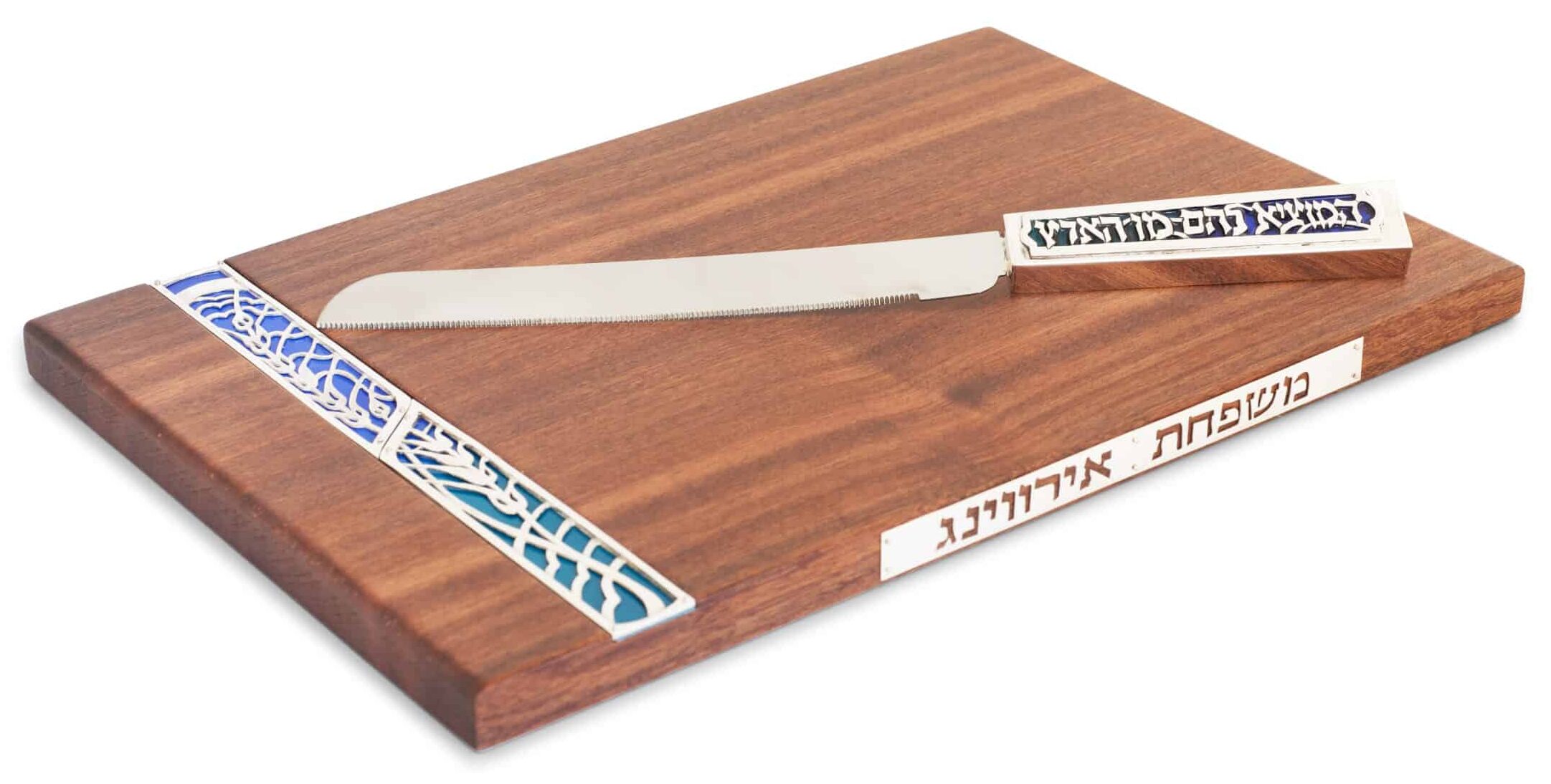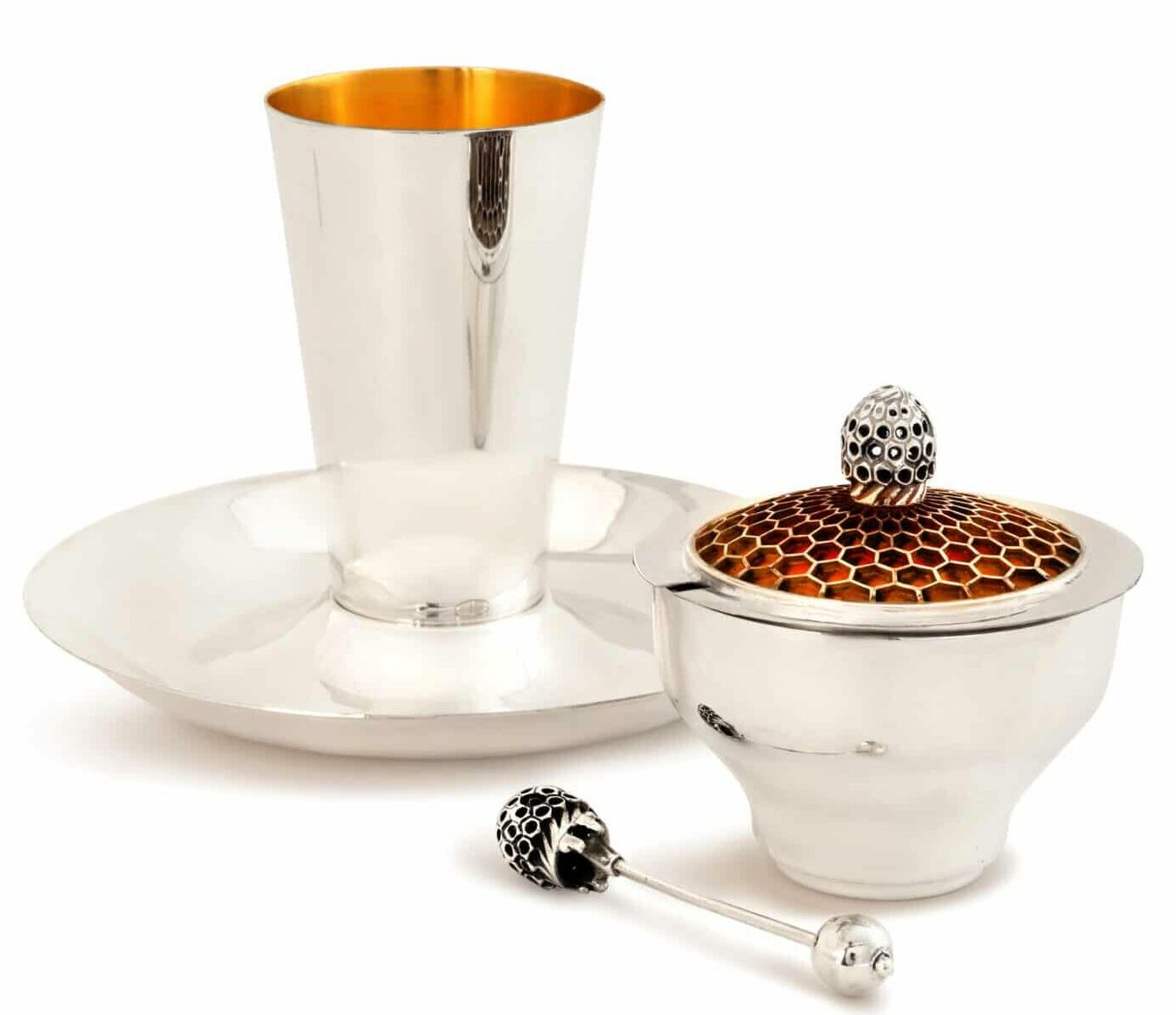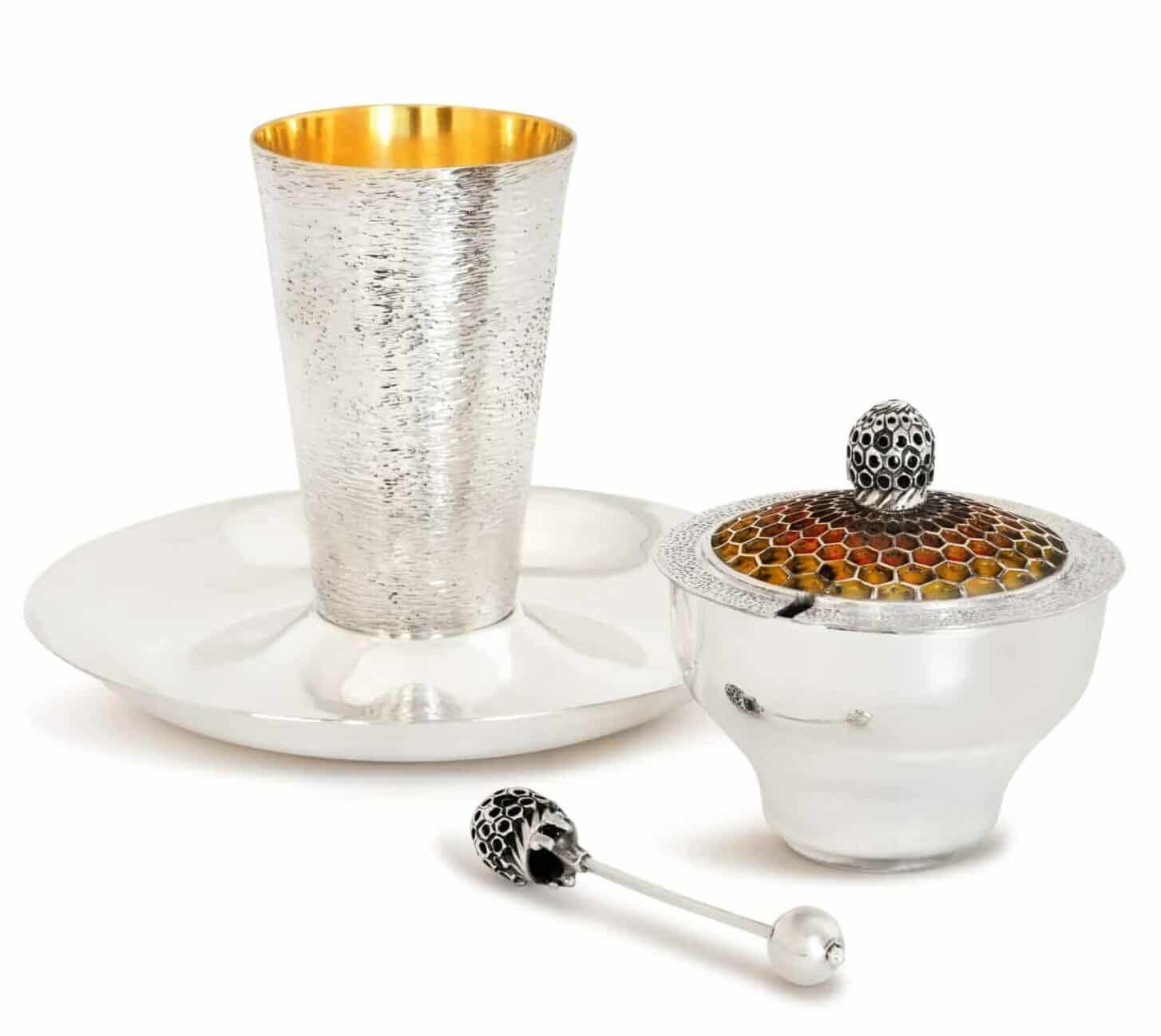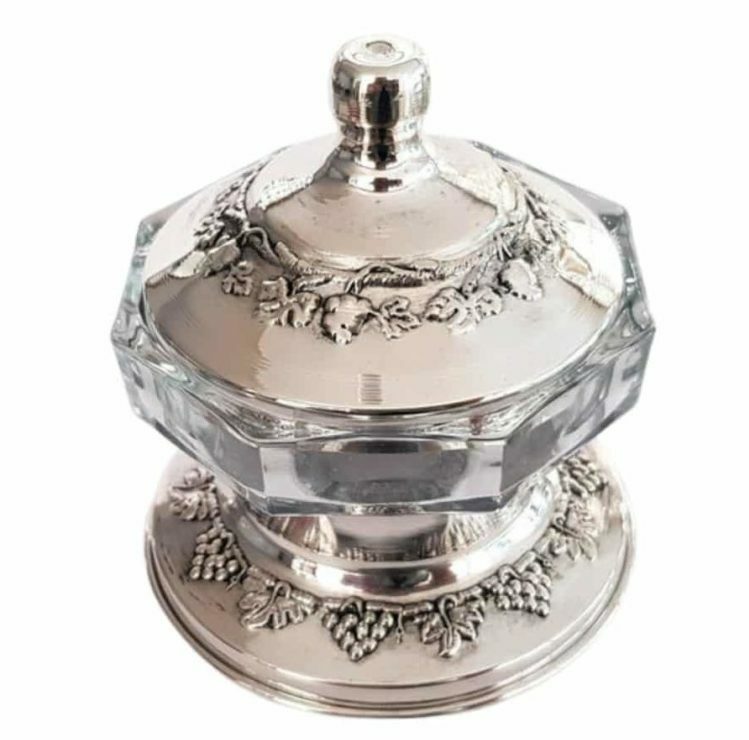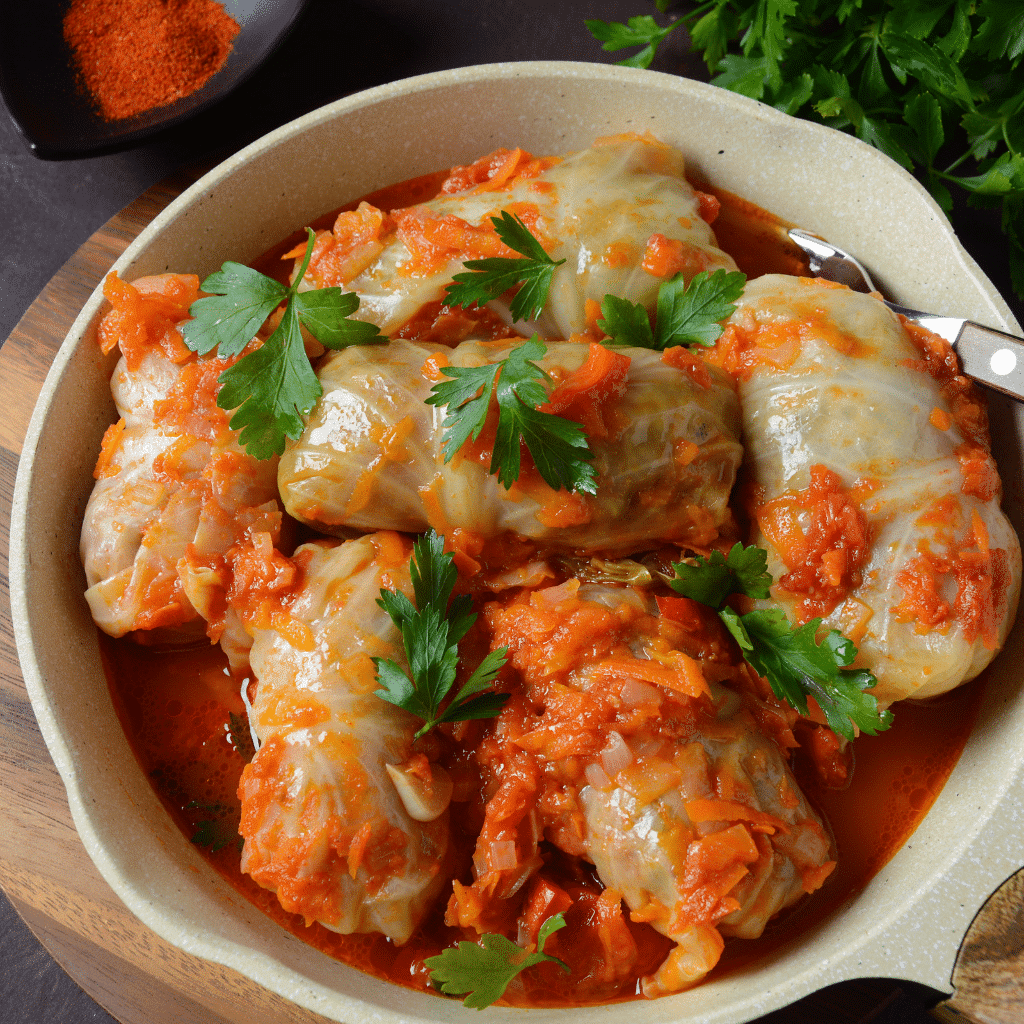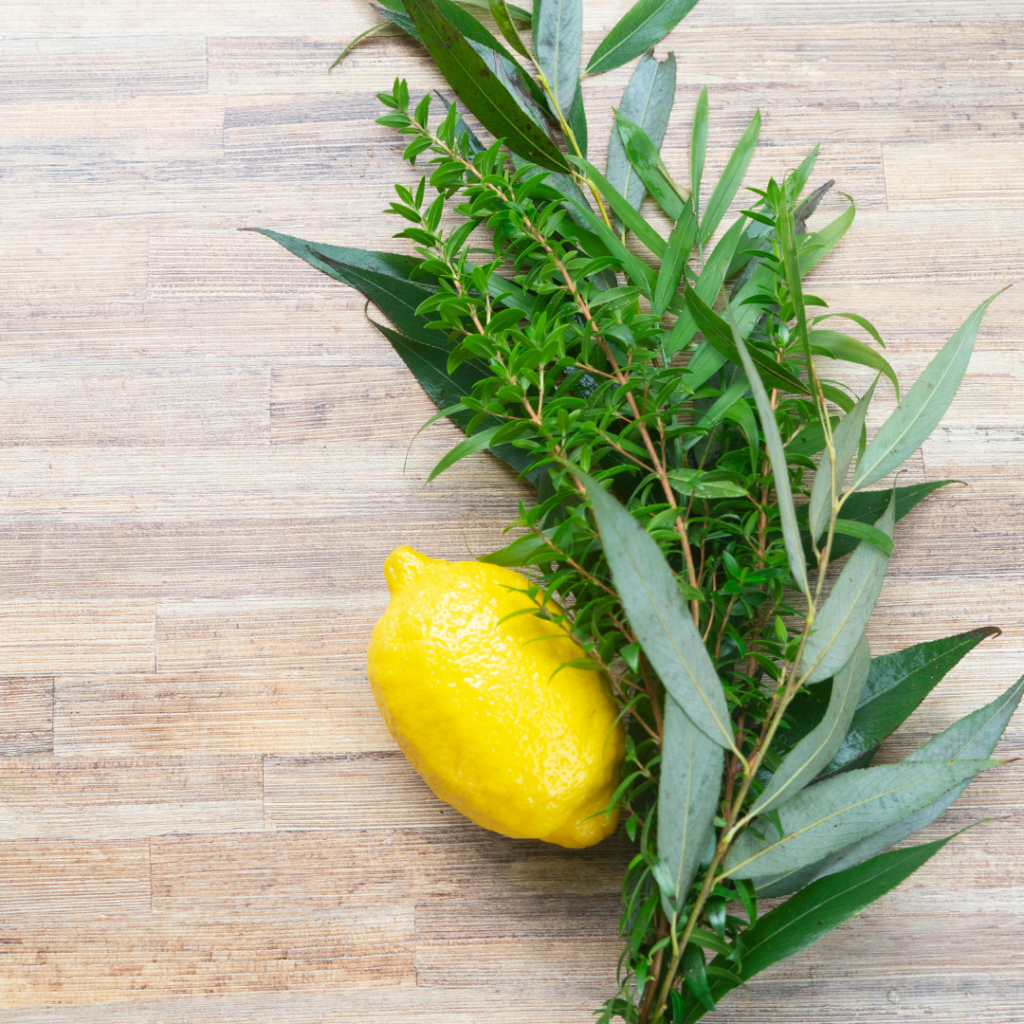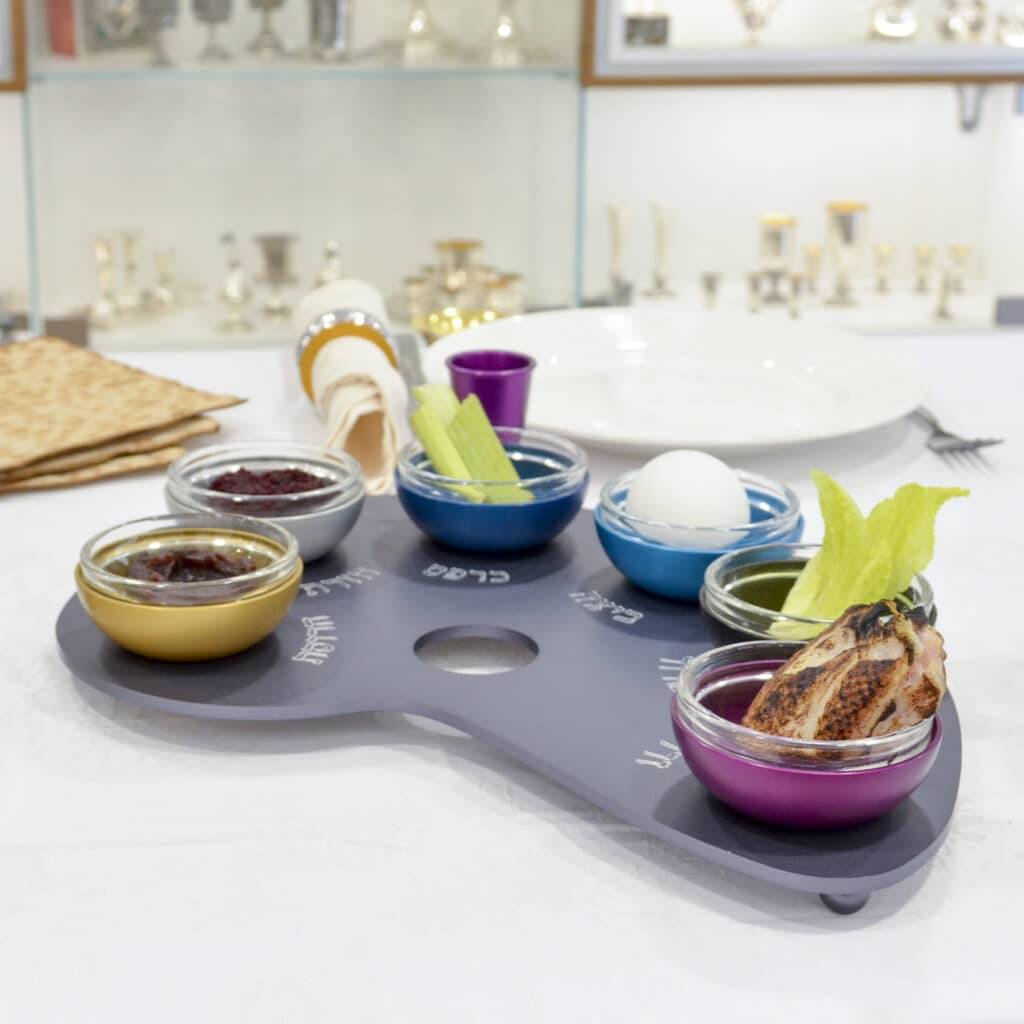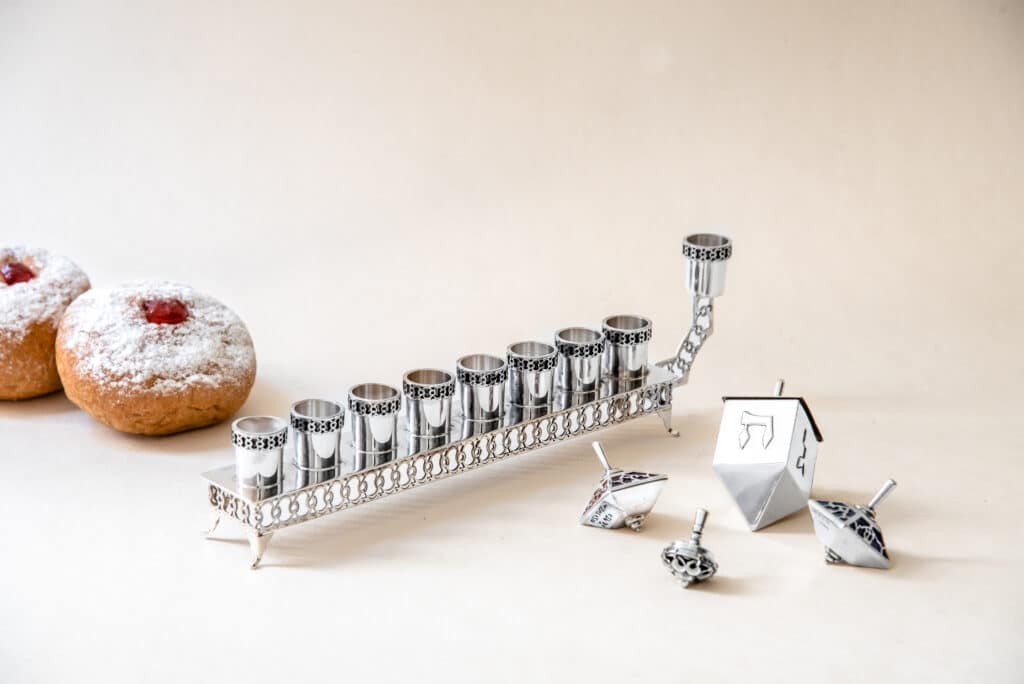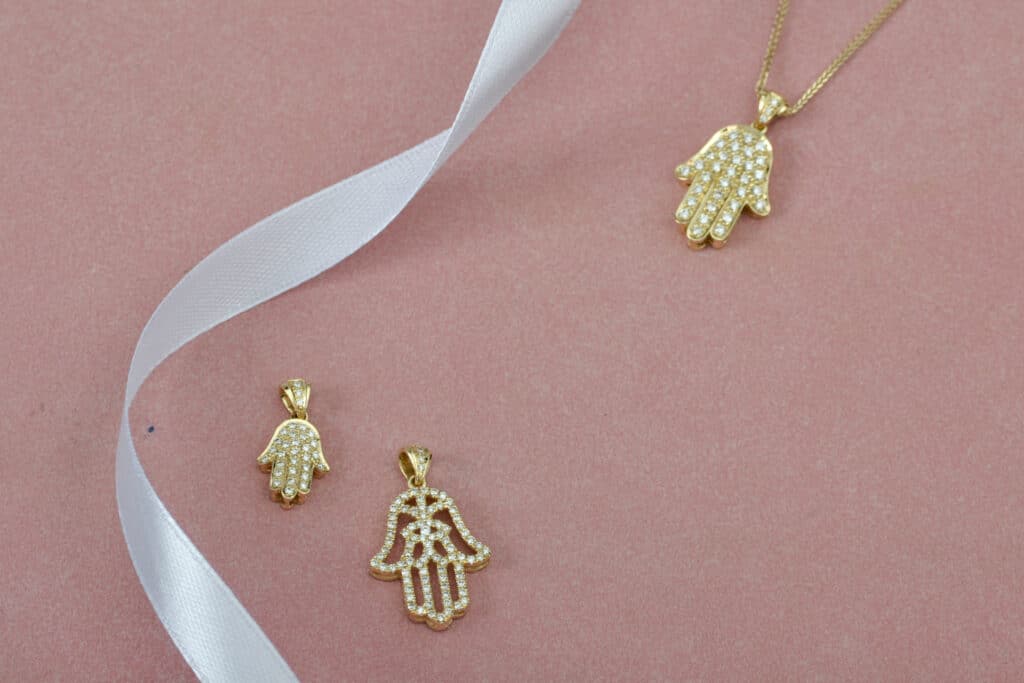
These traditional foods connect us to generations past and carry on rich symbolism that reminds us to reflect on our past and look forward to what’s to come.
So whether you’re enjoying a round challah dipped in honey or snacking on some pomegranate seeds, take a moment to appreciate the meaning behind each bite and enter into the new year with a heart full of gratitude, hope, and blessings. As always, thank you for joining us on this journey through the symbolic foods of Rosh Hashanah.
Wishing you all a Shanah Tovah – a good year filled with love, joy, and prosperity. L’Shanah Tovah!
To hear the entire article for your convenience, click the play button.
What are the Symbolic Foods for Rosh Hashanah?
Here are some symbolic and traditional foods for Rosh Hashanah:
Apples and honey
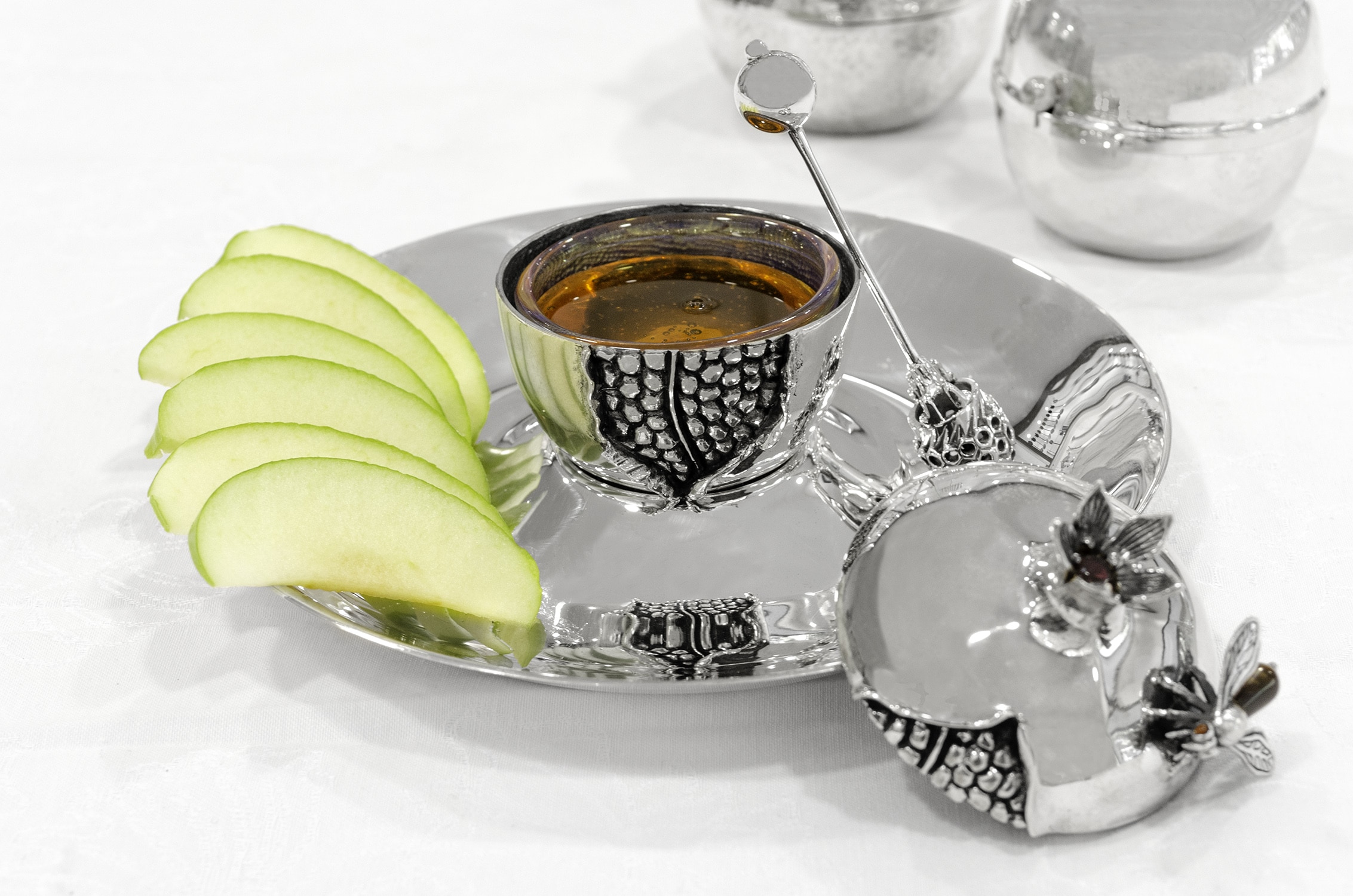
Rosh Hashanah apples and honey are a classic Rosh Hashanah treat. Apples represent the sweet new year to come, while honey symbolizes hope for a sweet future. You can enjoy them or add them to baked apples or honey cake recipes.
Pomegranate
Pomegranates are a popular choice for the Jewish New Year. Pomegranates are eaten on Rosh Hashanah because they have at least 613 grains, which is the same number as mitzvot (commandments) in Jewish law.
Round challahs
Round challahs are also a popular Rosh Hashanah food, as their shape symbolizes eternity and the cycle of life. On Rosh Hashanah, challah is usually dipped in honey and eaten as part of the traditional meal. The challah can also contain raisins to increase its sweet taste.
Read more: 10 Facts You Must Know About Rosh Hashanah Holiday.
Fish
Fish is another traditional part of the holiday meal. It stands for abundance and fertility due to its abundance in the seas, rivers, and lakes.
Beets
Beets are a root vegetable that’s traditionally eaten on Rosh Hashanah. The Hebrew word for beet, “Selek,” sounds similar to the Hebrew word “Le-salek,” which means “to remove.” This is why beets are often seen as a symbol of removing the old and ushering in the new year.
Carrot
Carrots are a symbol of hope and prosperity. The Hebrew word for carrot is “Gizera,” which sounds very similar to the word “G’zar,” which means “decree.” On Rosh Hashanah, God judges each person individually and decides their fate for the coming year. Eating carrots is a way to symbolize that hope for a favorable decree.
Discover Our Unique Rosh Hashanah Gift Collection
Rosh Hashanah Side Dishes
Here are some traditional Rosh Hashanah side dishes:
Kugel: A classic Jewish dish made with egg noodles, kugel is a rich and comforting noodle pudding often flavored with cinnamon, raisins, and sometimes even grated apples.
Tzimmes: Tzimmes is a sweet and hearty carrot stew that combines carrots with other root vegetables, such as sweet potatoes, and sometimes prunes or dried apricots. It is often flavored with honey, cinnamon, and other warm spices.
Cholent: Cholent is a slow-cooked stew typically made with beef, potatoes, beans, and various seasonings. It is cooked overnight or for several hours before the holiday and is served warm on Rosh Hashanah. The long cooking time results in tender meat and rich flavors.
Stuffed Vegetables: Stuffed vegetables, such as stuffed peppers or cabbage rolls, are popular side dishes for Rosh Hashanah. The fillings can vary, but they often include a mixture of ground meat, rice or grains, and aromatic herbs and spices.
Roasted Root Vegetables: Roasted root vegetables like carrots, parsnips, and beets are delicious and colorful additions to the Rosh Hashanah table. They can be seasoned with herbs, olive oil, and a touch of honey to enhance their natural sweetness.
Couscous: Couscous, a traditional North African grain dish, is a versatile and popular side dish for Rosh Hashanah. It can be prepared with various vegetables, herbs, and spices, adding a flavorful and satisfying element to the meal.
These side dishes complement the symbolic foods of Rosh Hashanah and provide a variety of flavors and textures to enhance the holiday feast.
What Do You Put on a Table for Rosh Hashanah?
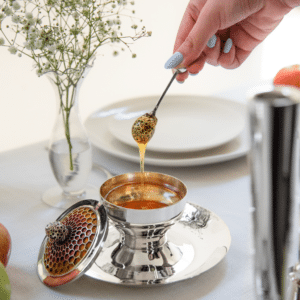
Kiddush Cups: These special cups are used for the sanctification of the holiday. They are filled with wine or grape juice and are used to recite the Kiddush blessing, marking the beginning of the Rosh Hashanah meal.
Honey Dishes: Honey plays a significant role in Rosh Hashanah customs, representing the desire for a sweet and prosperous year ahead. Small honey dishes or bowls are placed on the table to hold the honey for dipping apples and other symbolic foods.
Traditional Plates: Special plates, often adorned with decorative designs and motifs, are used to hold various symbolic foods. These plates may have sections or compartments to keep the different items separated.
Round Challah: On Rosh Hashanah, people eat round challah instead of the usually braided loaf. The circle symbolizes the cyclical nature of life and the coming year. The challah is placed on a plate or bread tray.
Apples: Apples are a prominent feature on the Rosh Hashanah table. They symbolize a good and fruitful year. They are often arranged in a bowl or a decorative dish and may be accompanied by a honey dish for dipping.
5 Delicious Rosh Hashanah Recipes! Watch and Start Cooking
What Sweet Foods are Served on Rosh Hashanah?

Honey cake: A classic honey-infused cake made with spices such as cinnamon, nutmeg, and cloves. It’s usually served with whipped cream or ice cream on the side.
Dried fruits: Dried apples, apricots, and dates are all popular Rosh Hashanah treats. They symbolize sweetness and abundance.
Halva: A sweet Middle Eastern confection made with tahini, sugar, and nuts.
Tzimmes: A traditional Rosh Hashanah stew made with sweet potatoes, carrots, prunes or raisins, and other dried fruits. It’s typically served as a side dish or as a main course.
Discover The Top 10 Breathtaking Honey Dishes For Rosh Hashanah.
What Do You Bless at the Rosh Hashanah Holiday Meal?
At the Rosh Hashanah holiday meal, it is customary to bless various items that will be eaten during the course of the meal.
Kiddush: This blessing is said over wine or grape juice. It is a way to sanctify the holiday and welcome the new year.
Hamotzi: Hamotzi is the blessing over bread or other grain products such as challah. It is a reminder of the importance of sustenance and nourishment.
Birchas Ha’aretz: This is a special blessing over fruits or vegetables grown in the Land of Israel (Eretz Yisrael). It is a way to thank God for blessing the land with abundance.
Shehechiyanu: This is the blessing of gratitude said when eating something special. It acknowledges the joy of participating in the holiday and expressing thanks for being alive.
Finally, at the end of the meal, it is customary to say “L’shanah Tovah,” which means “for a good year.” It is a way to wish one another health and happiness in the coming year.
What blessings do you say on Rosh Hashanah? Experience the power of Rosh Hashanah through this captivating video
Rosh Hashanah Gifts
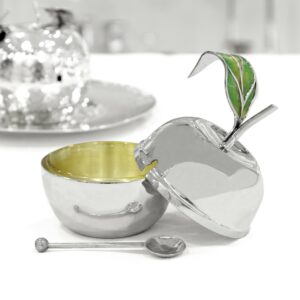
In addition to the traditional food, it is also customary to exchange gifts during Rosh Hashanah. These gifts may be symbolic items to remind us of the holiday or practical items that will be used throughout the year. Popular gift ideas include:
Books: Books are a great gift for people of any age. They make wonderful learning tools and provide hours of entertainment.
Handmade cards: Create a handmade card to give as a gift. Include a personal message and decorate the card with meaningful symbols or images.
Honey Dishes make perfect Rosh Hashanah gifts, symbolizing sweetness and abundance for the Jewish New Year. Rosh Hashanah, the Jewish celebration of the new year, is traditionally observed with prayer, reflection, and festive meals.
As a customary practice, gifts are exchanged among friends and family to signify good wishes for the coming year.
: Personalized Judaica items such as personalized challah boards or personalized kiddush cups are a meaningful and thoughtful way to commemorate the holiday.
Symbolic Jewish Jewelry: Jewelry such as Jewish pendants, Jewish bracelets, or Jewish earrings with meaningful symbols are popular Rosh Hashanah gifts. These pieces often feature images such as apples, honeycomb shapes, or shofars (rams horns) and serve as a reminder of the holiday throughout the year.
Candles: Sterling silver candlesticks or other candle holders make special gifts. They can be engraved with a personal message or the recipient’s name to add an extra special touch.
What Foods to Avoid on Rosh Hashanah?
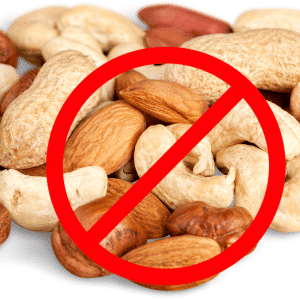
One food that is often avoided on Rosh Hashanah is nuts. This is because the Hebrew word for nut, “Egoz,” has the same numerical value as the Hebrew word for sin, “Chet.”
This means that eating nuts on Rosh Hashanah could symbolize inviting sin into the new year.
Also, it is customary to avoid eating sour and bitter foods and try to eat sweet foods to symbolize the sweet year that will come upon us for good and blessings.
Of course, not everyone follows these customs. Some people believe that the symbolism of these foods is outdated or that it is not important to avoid them.
What do you Wear to Rosh Hashanah Dinner?

When deciding what to wear to Rosh Hashanah dinner, it is recommended to opt for modest and conservative clothing choices. For men, this can include wearing a suit or dress pants with a formal shirt. Women may choose to wear dresses or skirts that are knee-length or longer, along with modest tops or blouses. It is also customary for both men and women to consider covering their shoulders.
In terms of color choices, it is generally advised to lean towards more subdued colors such as black, navy blue, gray, or earth tones. Avoiding overly flashy or revealing clothing is essential as maintaining decorum and respect during this religious event is of utmost importance.
Ultimately, while there may not be strict guidelines regarding attire for Rosh Hashanah dinner, making an effort to dress tastefully and respectfully will be appreciated by those celebrating this significant holiday.
Usually on Jewish holidays, it is customary to wear white clothes, especially on Rosh Hashanah which is the holiday that symbolizes a new beginning
Discover the top 10 Honey Dishes with stunning designs for Rosh HaShanah
Shana Tova! (Happy New Year)
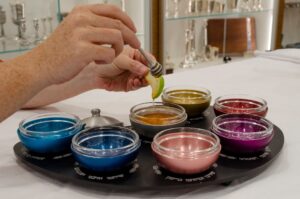
Rosh Hashanah meal is a time-honored tradition filled with symbolic foods and delicious flavors. Every element holds significance, from the round challah symbolizing continuity to the apples and honey representing sweetness and abundance.
May this festive occasion be filled with joy, blessings, and the sweetest of moments shared around the rosh hashanah honey dish.
Experience the Magic of Rosh Hashanah with Our Exclusive Rosh Hashanah Gifts Collection
What is The Meaning of L’shanah Tovah?
During the Jewish holiday of Rosh Hashanah and the Days of Awe, it is customary to exchange greetings and well wishes. One of the most commonly used greetings during this time is “[leʃaˈna toˈva]” in Hebrew, which translates to “for a good year” in English.
In addition to this, another common greeting used is “shanah tovah” (שָׁנָה טוֹבָה), which simply means “a good year”. This phrase encapsulates the hope for a positive and prosperous year ahead.
For those seeking an even more heartfelt wish, “shanah tovah u’metukah” (שָׁנָה טוֹבָה וּמְתוּקָה) is often exchanged. This phrase translates to “a good and sweet year”, symbolizing not just goodness but also joy and sweetness in the coming months.
These greetings hold significance during Rosh Hashanah and are a way for individuals to express their hopes and aspirations for themselves and their loved ones in the upcoming year.
In Conclusion
as we wrap up this blog post about the symbolic foods of Rosh Hashanah, it is evident that these dishes hold a deeper meaning beyond just serving as a delicious meal. They represent hope for a sweet and prosperous future, abundance and fertility, and connection to our cultural heritage. These traditional foods bring families and communities together to celebrate and reflect on the past year while looking forward to new beginnings.
But beyond their symbolic significance, these foods also serve as a reminder to be grateful for all that we have and to hope for better things to come. As we enter into the new year, may we continue to cherish these traditions and pass them down to future generations.
Thank you for joining us on this journey through the symbolic foods of Rosh Hashanah. May this Shanah Tovah be filled with love, joy, and prosperity for each and every one of you. Let us savor each bite with gratitude and enter into the new year with renewed hope, blessings, and appreciation for all that surrounds us.
As always, L’Shanah Tovah – may this be a good year for us all!

